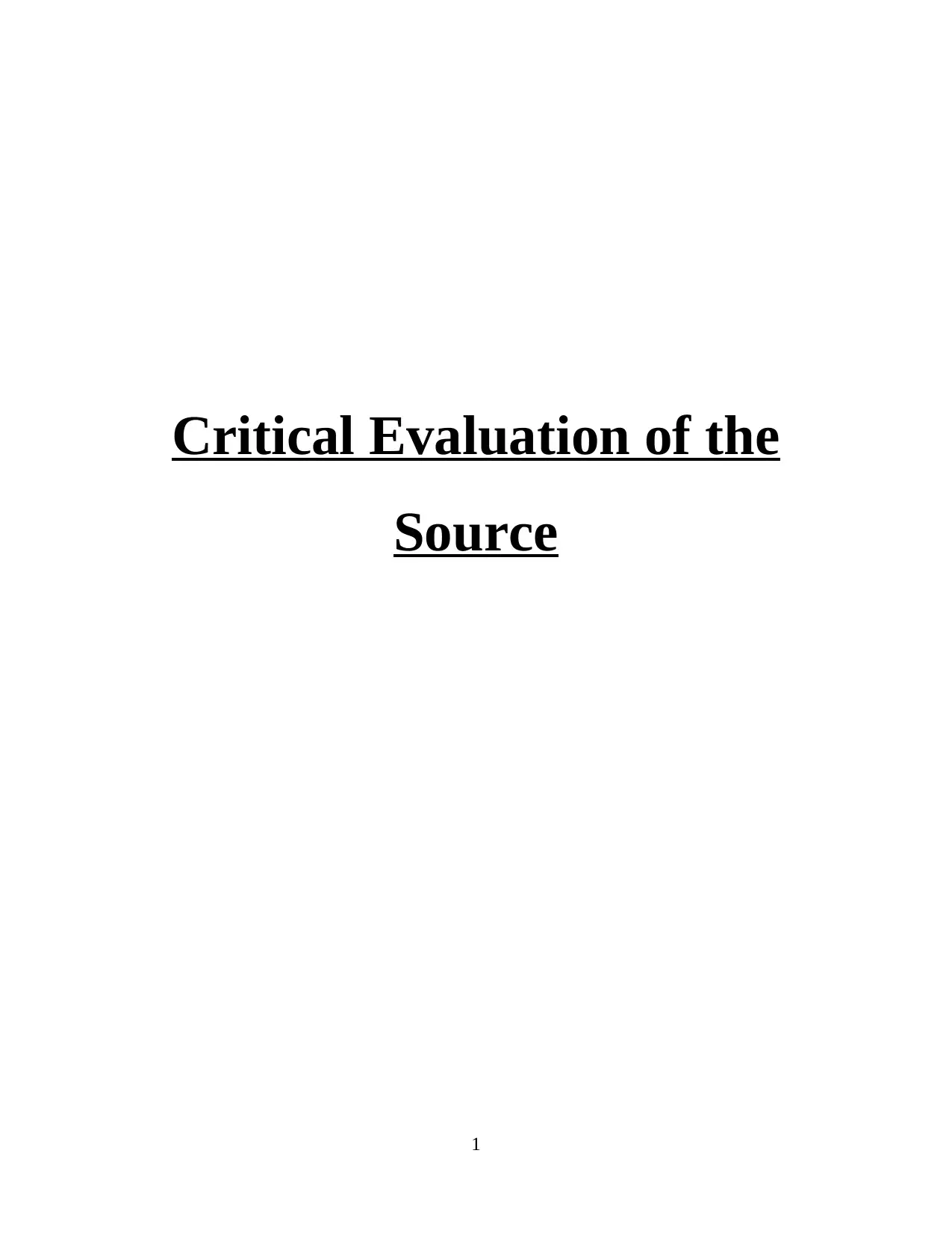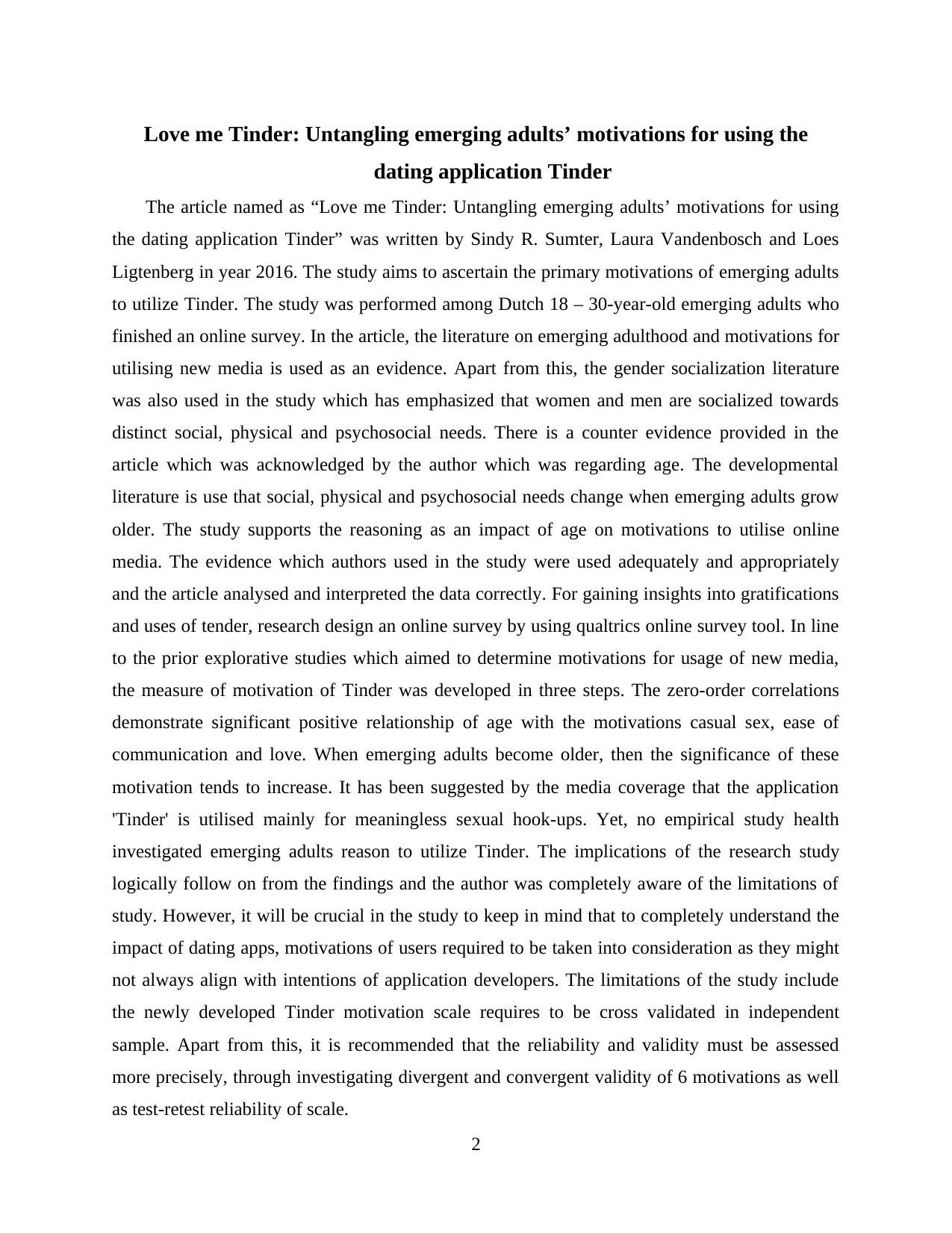Critical Analysis: Tinder Study on Emerging Adults' Motivations
VerifiedAdded on 2023/01/03
|2
|471
|71
Report
AI Summary
This report provides a critical analysis of the study "Love me Tinder: Untangling emerging adults’ motivations for using the dating application Tinder." The study, conducted by Sindy R. Sumter, Laura Vandenbosch, and Loes Ligtenberg, investigates the motivations behind Tinder usage among 18-30 year old emerging adults, using online surveys and relevant literature on emerging adulthood and gender socialization. The report highlights the study's methodology, including the use of the Qualtrics online survey tool to measure motivations, and the findings, such as the positive correlation between age and motivations like casual sex, ease of communication, and love. The analysis acknowledges the study's limitations, including the need for further validation of the Tinder motivation scale. The report concludes with the implications of the research and suggestions for future studies, emphasizing the importance of understanding user motivations to fully grasp the impact of dating applications. The study's findings suggest that motivations behind dating app usage vary and are influenced by factors such as age and gender.
1 out of 2








![[object Object]](/_next/static/media/star-bottom.7253800d.svg)